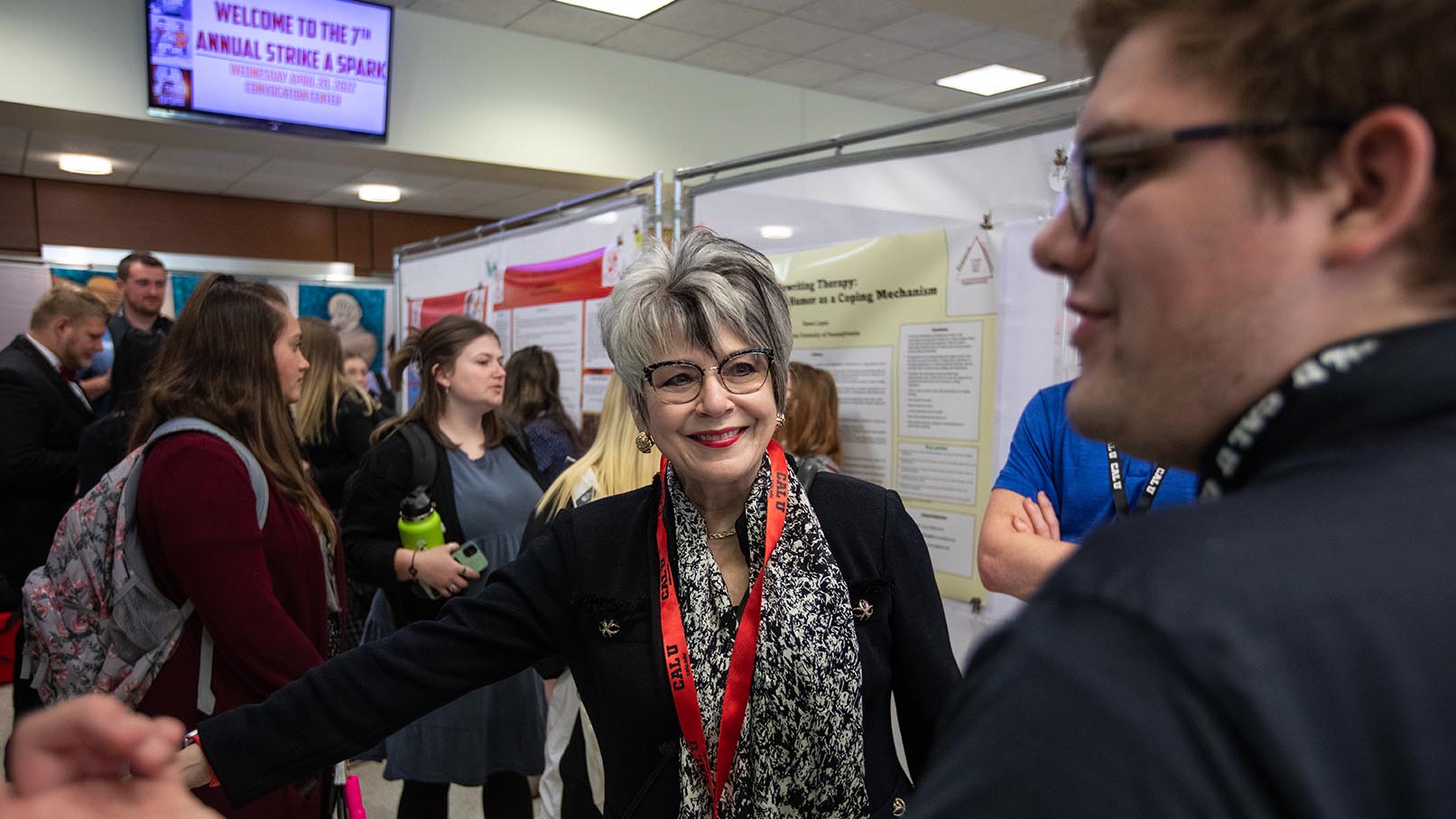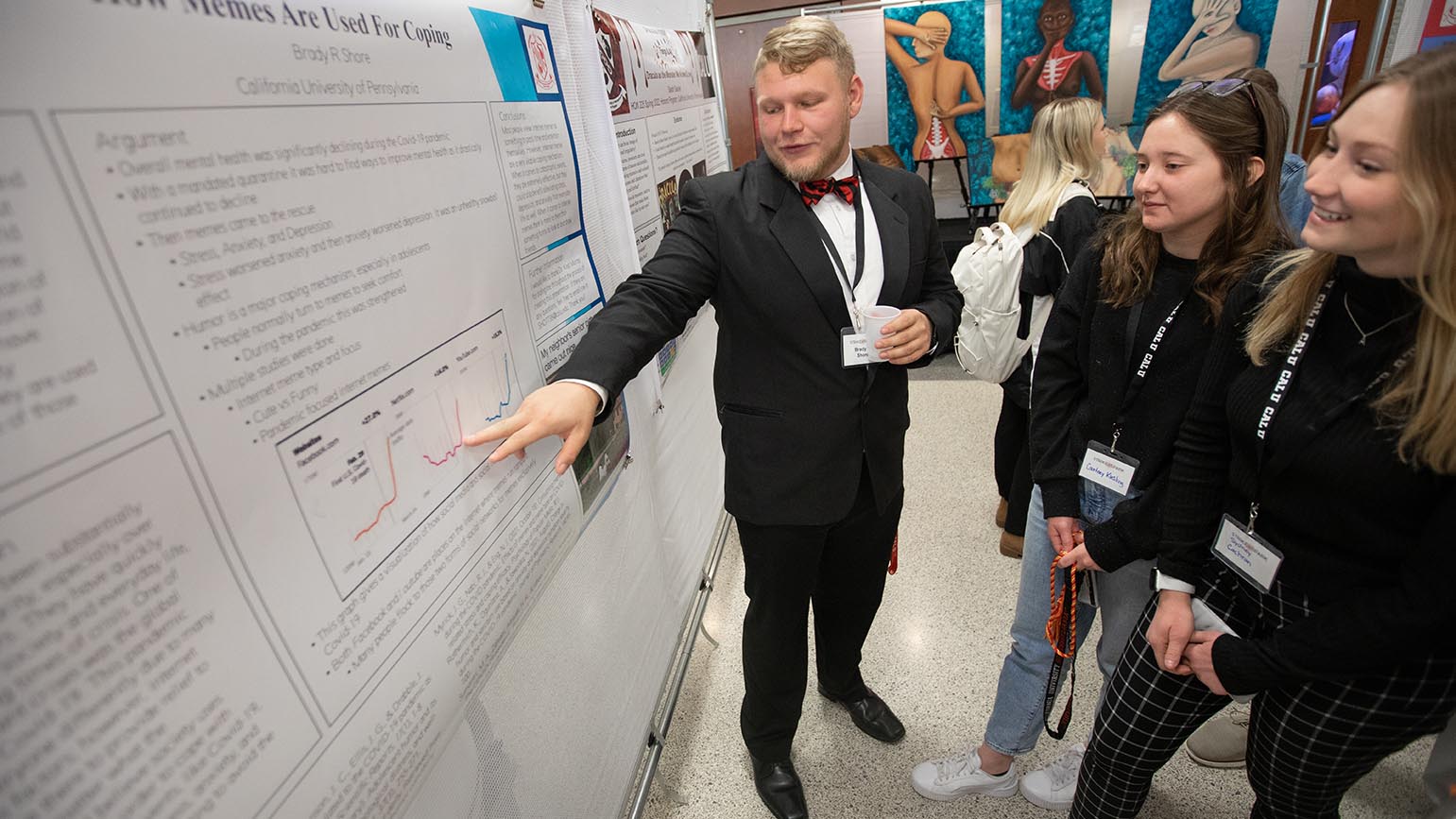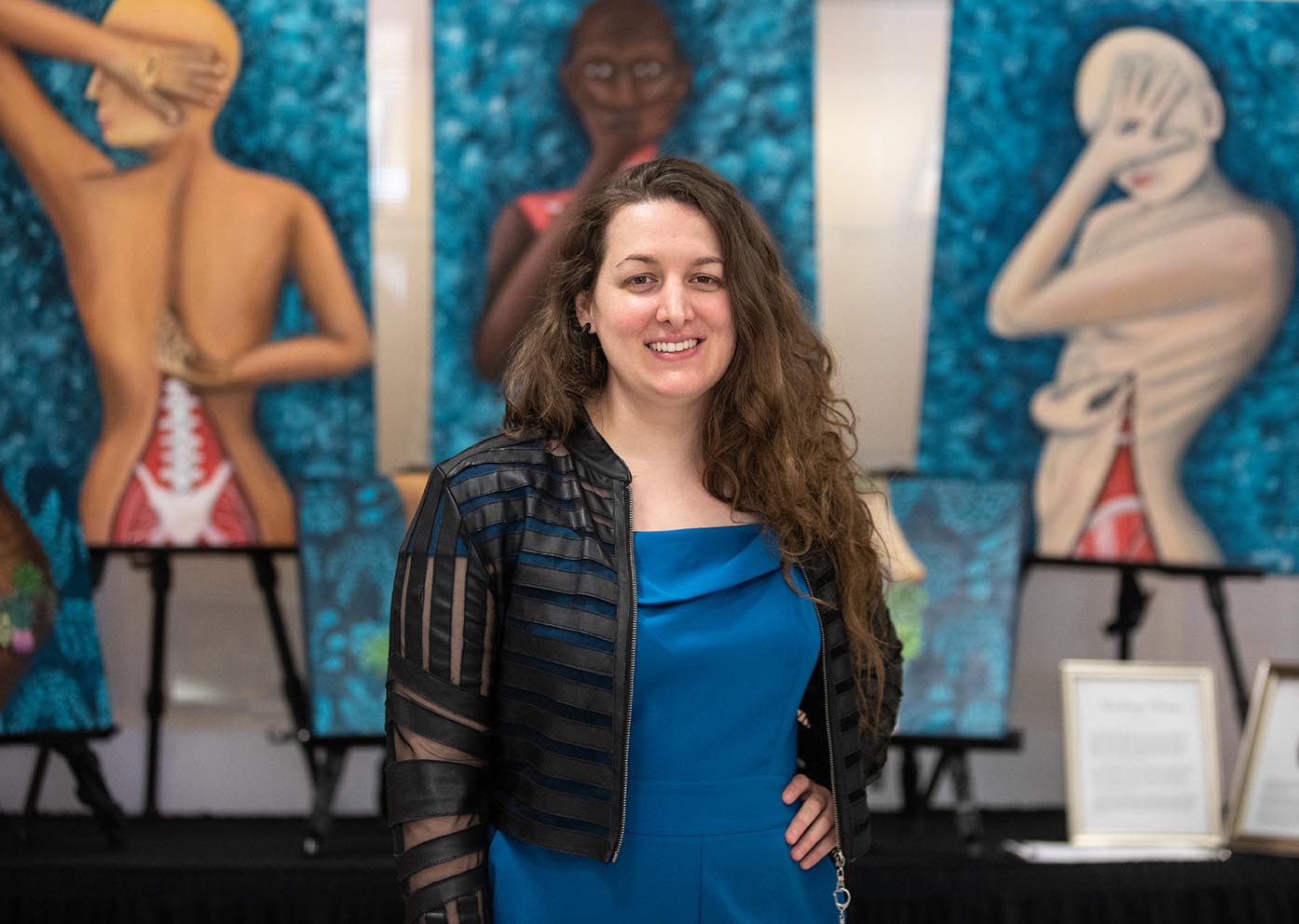More than 250 creative and poster presentations were made at the Convocation Center on April 20.
The 2022 Strike a Spark Conference on Research, Scholarship and Creative Activity featured more than 250 live and asynchronous presentations on April 20 when it returned to a mostly in-person format in the Convocation Center.
Interim University President Dr. Dale-Elizabeth Pehrsson was on hand for the event.
“There is something exciting and joyful about digging into a topic that really intrigues you, and then sharing what you discover with others,” she said. “This conference is the culmination of so much hard work – so take a moment to celebrate all you’ve accomplished.”
“It was awesome to have so many student there, engaged and really bringing back the event to a roaring in-person success,” said Dr. Azadeh Block, the director of the Center for Undergraduate Research at Cal U, which organizes the event. The event was held virtually last year due to the pandemic.
“The posters were amazing as were the digital storytelling events. I think the students put so much hard work into it, and our faculty felt very engaged with such a large event. We had students from Jeannette High School and Westmoreland Community College; it went really well.”
Senior Kerry Katz, a fisheries and wildlife biology major, presented “The Effects of Invasive Knotweeds (Reynoutria spp.) on Ground-Dwelling Arthropods.”
She also helped to organize the Strike a Spark event. She was nominated to be a member of the organizing committee, provided feedback on programming, and helped on the day of the event with check-in and setup.
“I’m really interested in a career in research in ecology and conservation,” Katz said. “It’s amazing that Cal U offers such opportunities for undergraduates. I had a great opportunity to work with three professors, who were all amazing and willing to help: Dr. David Argent, my ecology professor; DR. Jesse Eiben, invertebrate zoology, since a lot of my project was focused on arthropods; and Dr. Robert Whyte, who does a lot of work with invasive species, which is what knotweed is.”
A digital first
Students in Dr. Christina Fisanick’s digital storytelling class presented their work at Strike a Spark, with one group taking a historical look at the LeMoyne Crematory, located in North Franklin Township.
It was built in 1876 by Dr. Francis LeMoyne, who thought cremation would help prevent contamination of drinking water. Today, the modest one-story building is recognized as a historic landmark in the United States.
The students took a tour of the building and were given access to the history of the crematory.
As part of the research, first-year honor student Sarah Seader entered the crematory to get footage for her story, becoming the first living woman and second living person in history to enter.
“Our group was really fortunate,” Seader said. “Clay (Kilgore), who is the head of Washington County Historical Society, let us go in and take pictures and do everything we needed to tell the story of Dr. LeMoyne and the crematorium.”
Seader said that the class divided up the focus to be able to tell the full story of LeMoyne Crematory. She also noted that being the first woman to enter the crematory oven was a something special for her
“To be able to actually take part and record that part of the building’s history, and to be the first woman to do so is amazing,” she said. “To have that experience here at Cal is incredible. And the amount of access we had as historians to tell this story was something others do not get.”
A formal premiere was held April 25, and the video can be viewed at https://www.youtube.com/watch?v=B2ASvAtzciQ.
The digital storytelling class is part of a partnership with the Senator John Heinz History Center in Pittsburgh. Each semester, students focus on an interesting person, place or thing in the collections of local historical societies and museums.



